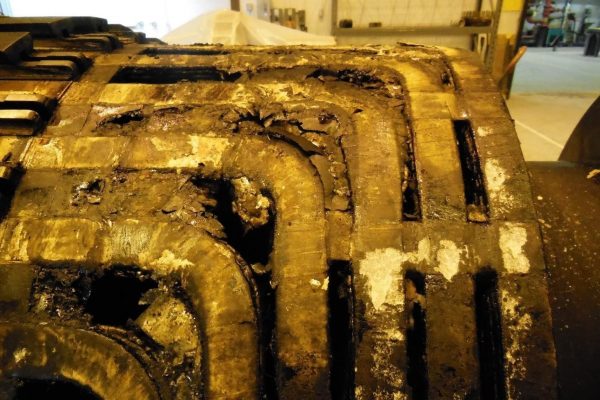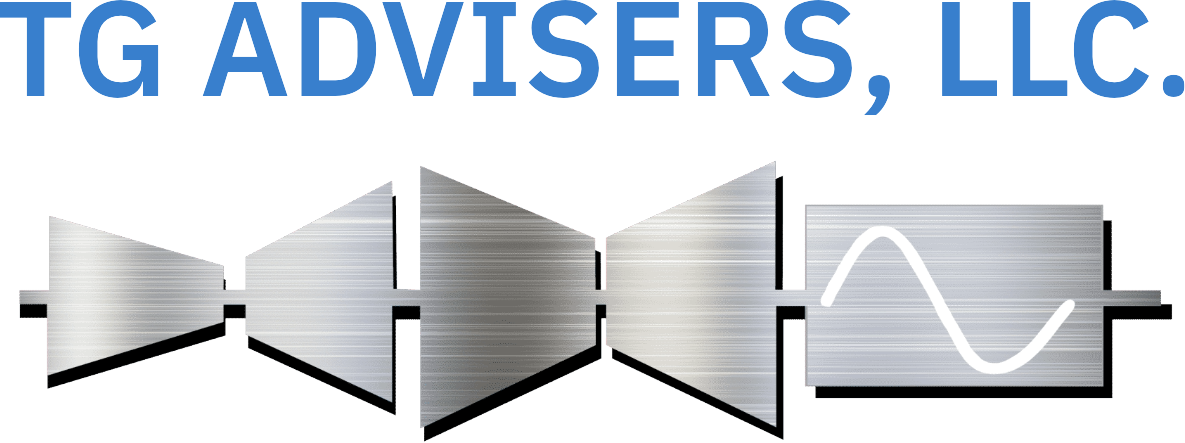Thermally Sensitive Generator Rotors
Thermally sensitive generator rotors tend to bow and increase bearing vibration. In some cases, a rotor rewind is required to restore the unit to acceptable operating vibration amplitudes. Thermal sensitivity is usually a symptom of generator rotor winding uneven heating or uneven growth. In this article, we discuss the causes and offer general advice for new equipment and repair specifications.
Uneven heating is typically caused by shorted turns of coils. When coil turns are shorted, the field current does not take the designed path through all of the turns of the coil. Rather, the current takes a shorter electrical path and bypasses one or more turns. As a result, the total I2R ohmic heating loss of a coil slot containing short(s) will be less than coil slots containing non-shorted coils (adjacent slots and slots on the opposite side of the rotor). The I2R heating loss is less because the number of turns carrying the current has been reduced due to the shorted turn. Because the heating is a function of the square of the field current, this phenomenon will be more pronounced while operating the unit at higher levels of field current (i.e. the overexcited, rotor/field current limiting region of the capability curve). Typical causes of turn shorts include slipped or missing turn insulation, copper burrs, brazing spalls, uneven coil stack movement in the end-turns, and contamination.
Not all rotors are equally susceptible to shorted turn related problems. For example, a rotor with a 5-turns per coil winding and high field current (e.g. 6,000+ amps) is more sensitive than one with a 15-turns per coil winding and lower field current (e.g. 1,500 amps). In a 5-turn per coil design, a full shorted turn reduces the ampere-turns in the slot by 20% versus 7% for a 15-turn coil design. These numbers are illustrative; not all field current follows the short.
Turn to turn shorts can also lead to additional shorts, exacerbating the issue. Shorted areas are locally heated due to the I2R loss. This localized heating may accelerate thermal degradation of neighboring turn insulation causing even more shorted turns − informally known as the cascading short theory. Another issue is that a ground fault can occur if the localized heating burns through the ground wall insulation.
Figure 1 Deteriorated End Turn Insulation causing shorted turns
Shorted turns are usually diagnosed by varying Vars via increasing and decreasing field current at a constant MW load and evaluating changes in generator rotor vibration. An stator-rotor air gap flux probe is another excellent tool for detection and diagnosis. Vibration issues, at least in the short term, can often be mitigated by balance moves reducing high load peak vibration with a trade-off of higher vibration at lower loads.
Uneven growth of the generator rotor winding is a second contributor to thermal sensitivity. Uneven growth occurs when portions of the winding bind or stick with loading. The coefficient of thermal expansion of copper exceeds that of steel. Accordingly, when the generator rotor is energized with excitation current, copper in the rotor slots will expand more than the steel rotor body. The winding must be able to freely move to accommodate this differential expansion. Otherwise, the non-uniform growth of the winding can create rotor unbalance and vibration issues.
Figure 2 Shorted turns in Pole 1 lead to thermally sensitive rotor bow
Slip layers of the ground-wall insulation system (i.e. the slot liners/cells/armor and retaining ring insulation), blocking of the end-turn windings, and slot filling components are designed to allow the winding to expand and contract during operation. If these systems do not function properly, binding and non-uniform expansion may result.
Heat runs after original manufacture or rewind are typically used to validate the winding system. The rotor is heated at speed to simulate copper expansion under CF loading. Accordingly, the slip layers are tested to ensure proper materials and assembly. Although heating by energizing the rotor can mimic field operation, external heating along with windage and friction also works. The main objective is to know the rotor windings can expand and contract as designed without thermally induced vibration. Additionally, it is advisable to electrically test the rotor for shorted turns while the windings are in their hot/operational position and after cooling down.
Finally, blocked ventilation passages are another source of uneven heating and growth. If generator rotor coil ventilation passages are blocked, temperatures can easily exceed the operating limits of turn and ground wall insulation. Typical blockages are caused by foreign debris, shifted turn insulation, or damaged end-turn blocking.
Thermal sensitivity is not just a concern for vintage designs. Today, designers have excellent modeling tools to lower cost by reducing design margins or increasing capability for a given frame size. An example of the latter is 300 MVA air-cooled generators made possible by the use of computational fluid dynamics (CFD) to optimize cooling flow design and maximize heat transfer.
However, there is a limit to how accurate designers can approximate the rotational flows existing within a generator rotor. For example, since air is much heavier than hydrogen, it is sometimes problematic for the cooling air to access all the generator rotor coils, and depending on the direction of rotation and designed air flow management components, certain coils may run hotter and expand more than designers intended. The net result of this will depend on which coil(s) are running hotter than expected. It is mentioned here as it relates to the possibility of bound expansion and contraction.
Specifications for new equipment or repair should include requirements to use proven technologies for slip layers, ground wall insulation, turn insulation, and adhesives. In-process, rotational, and expectations for final acceptance testing of the rotor should also be clarified.


